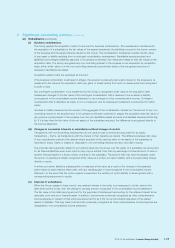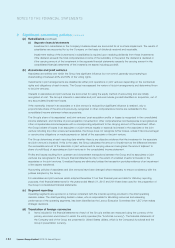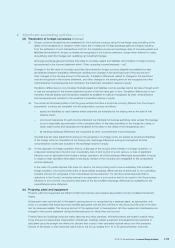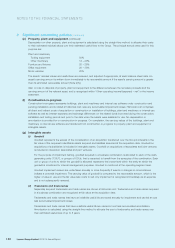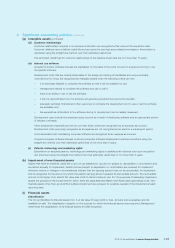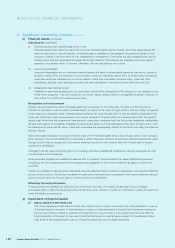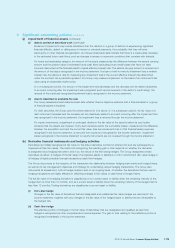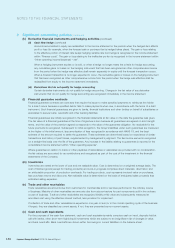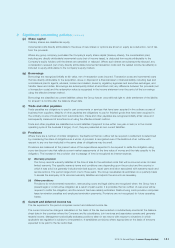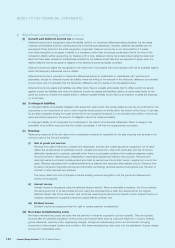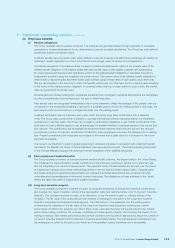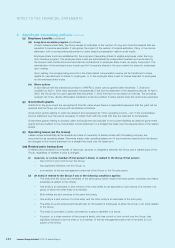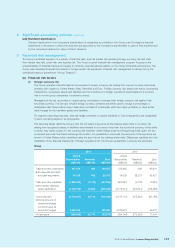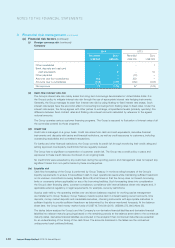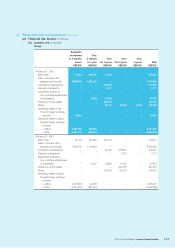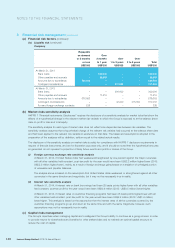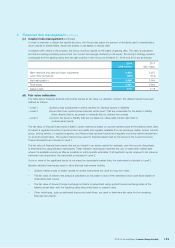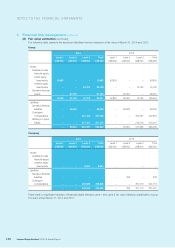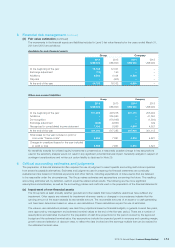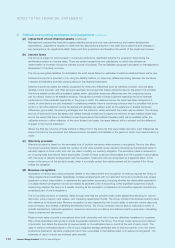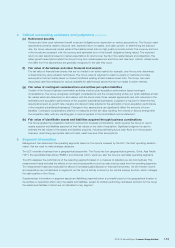Lenovo 2014 Annual Report Download - page 145
Download and view the complete annual report
Please find page 145 of the 2014 Lenovo annual report below. You can navigate through the pages in the report by either clicking on the pages listed below, or by using the keyword search tool below to find specific information within the annual report.
143
2013/14 Annual Report Lenovo Group Limited
2 Significant accounting policies (continued)
(x) Employee benefits
(i) Pension obligations
The Group operates various pension schemes. The schemes are generally funded through payments to insurance
companies or trustee-administered funds, determined by periodic actuarial calculations. The Group has both defined
benefit and defined contribution plans.
A defined benefit plan is a pension plan which defines an amount of pension benefit that an employee will receive on
retirement, usually dependent on one or more factors such as age, years of service and compensation.
The liability recognized in the balance sheet in respect of defined benefit pension plans is the present value of the
defined benefit obligation at the balance sheet date less the fair value of plan assets, together with adjustments
for unrecognized past service costs. Significant portion of the defined benefit obligation is calculated annually by
independent actuaries using the projected unit credit method. The present value of the defined benefit obligation is
determined by discounting the estimated future cash outflows using interest rates of high-quality corporate bonds
that are denominated in the currency in which the benefits will be paid, and that have terms to maturity approximating
to the terms of the related pension obligation. In countries where there is no deep market in such bonds, the market
rates on government bonds are used.
Actuarial gains and losses arising from experience adjustments and changes in actuarial assumptions are recognized
as other comprehensive income/expense in the year in which they arise.
Past service costs are recognized immediately in the income statement, unless the changes to the pension plan are
conditional on the employees remaining in service for a specified period of time (the vesting period). In this case, the
past service costs are amortized on a straight-line basis over the vesting period.
A defined contribution plan is a pension plan under which the Group pays fixed contributions into a separate
entity. The Group pays contributions to publicly or privately administered pension insurance plans on a mandatory,
contractual or voluntary basis. The Group has no legal or constructive obligations to pay further contributions if the
fund does not hold sufficient assets to pay all employees the benefits relating to employee service in the current and
prior periods. The contributions are recognized as employee benefit expense when they are due and are reduced
by employer’s portion of voluntary contributions forfeited by those employees who leave the scheme prior to vesting
fully. Prepaid contributions are recognized as an asset to the extent that a cash refund or a reduction in the future
payments is available.
The Group’s contributions to local municipal government retirement schemes in connection with retirement benefit
schemes in the Mainland of China (“Chinese Mainland”) are expensed as incurred. The local municipal governments
in the Chinese Mainland assume the retirement benefit obligations of the qualified employees.
(ii) Post-employment medical benefits
The Group operates a number of post-employment medical benefit schemes, the largest being in the United States.
The entitlement to these benefits is usually conditional on the employee remaining in service up to retirement age
and the completion of a minimum service period. The expected costs of these benefits are accrued over the period
of employment using an accounting methodology similar to that for defined benefit pension plans. Actuarial gains
and losses arising from experience adjustments and changes in actuarial assumptions are recognized as other
comprehensive income/expense in the period in which they arise. The obligations of these schemes in the United
States are valued annually by independent qualified actuaries.
(iii) Long-term incentive program
The Group operates a long-term incentive program to recognize employees’ individual and collective contributions,
and includes two types of awards, namely share appreciation rights and restricted share units (“Long-term Incentive
Awards”). The Company reserves the right, at its discretion, to pay the award in cash or ordinary shares of the
Company. The fair value of the employee services received in exchange for the grant of the Long-term Incentive
Awards is recognized as employee benefit expense. The total amount to be expensed over the vesting period
is determined by reference to the fair value of the Long-term Incentive Awards granted, including any market
performance conditions (for example, an entity’s share price); excluding the impact of any service and non-market
performance vesting conditions (for example, profitability and sales growth targets); and including the impact of non-
vesting conditions. Non-market performance and service conditions are included in assumptions about the number of
Long-term Incentive Awards that are expected to become exercisable/vested. The total expense is recognized over
the vesting period, which is the period over which all of the specified vesting conditions are to be satisfied.


